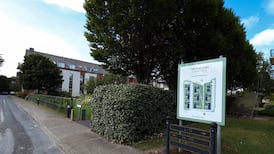Residential property prices rose 14.1 per cent in the year to the end of June, with prices in Dublin rising 11.8 per cent and prices outside Dublin up 16 per cent, according to new figures from the Central Statistics Office (CSO).
The rate of increase slowed slightly from 14.4 per cent in the year to May, extending a pattern of deceleration seen in recent months, but it remains substantially higher than the 6.8 per cent pace of rises recorded in the year to June 2021.
The statistics agency said the value of its residential property price index in June, at 163.6 points, equalled the level recorded at the peak of the boom in April 2007 before the unwinding of the Celtic Tiger economy.
However, actual property prices are not yet at the level recorded in 2007 before the market crashed. In Dublin, residential property prices are 8.1 per cent lower than their February 2007 peak, though outside Dublin they are now just 1.3 per cent lower than their May 2007 peak.
READ MORE
The median, or midpoint, price paid for a property in the 12 months to the end of June was €290,000, the CSO said. Longford saw the lowest median price, which was €140,000, while the highest median price was in Dún Laoghaire-Rathdown, where it now stands at €605,000.
[ Let’s not be too Daft about the accuracy of all the data on rental marketOpens in new window ]
In Dublin, the highest price growth was in Dublin city, where prices have inceased13.8 per cent, while Dún Laoghaire-Rathdown saw a rise of 10.1 per cent. The CSO’s border region of Cavan, Donegal, Leitrim, Monaghan and Sligo saw the fastest pace of increases, up 20.1 per cent, while the slowest was recorded in the midwest counties of Clare, Limerick and Tipperary, where prices climbed 11.9 per cent.
Apartment prices rose at a slightly slower pace than house prices. In Dublin, house prices increased 11.9 per cent and apartment prices 11.2 per cent, while outside Dublin, house prices were up 16.1 per cent and apartment prices 14.4 per cent.
Trevor Grant, who chairs the Association of Irish Mortgage Advisors, said the end of summer was traditionally a slower period for mortgages, but activity in the sector was “not dwindling” this year.
“Although inflation could well be eating into the pandemic savings which drove some mortgage activity a year ago, we suspect that mortgage market activity will continue to increase as we approach the last quarter of the year,” Mr Grant said.
“There are thousands of hungry house-hunters out there whose primary goal is to secure a home — and unfortunately, they are all vying for a very limited number of suitable properties.”
Brokers Ireland director of financial services Rachel McGovern said the slight tapering in the level of year-on-year increases each month since March may indicate that prices are stabilising.
“It is to be hoped that housing supply will continue to improve so that prices do not continue to escalate at the levels we’re seeing. A positive in this regard was the increase of 53.4 per cent in the number of new dwellings built in Q2 [the second three months of] this year over the same period a year earlier. A worry, however, would be the level of increases reported in building costs,” she said.
Noting the recent Economic and Social Research Institute finding that the share of 25- to 34-year-olds living independently and owning their own homes has fallen dramatically from 60 per cent in 2004 to just 27 per cent in 2019, Ms McGovern said there were “severe societal and economic consequences” to allowing this trend to continue. “Yet one could not point with any degree of confidence to it being reversed in the foreseeable future.”














